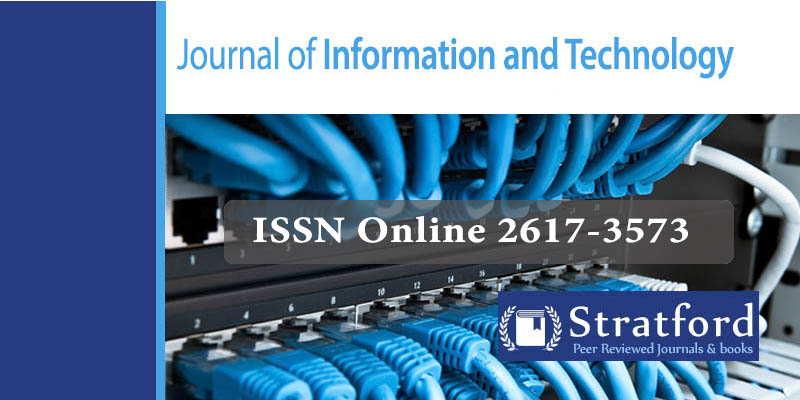Assessing State-Dependent Crime Patterns in the USA: A Markov Chain Approach
DOI:
https://doi.org/10.53819/81018102t4151Abstract
Understanding crime patterns in the USA can significantly contribute to effective policymaking and proactive law enforcement strategies. This study aims to utilize a novel method in the field of criminology - the Markov Chain model - to assess state-dependent crime patterns in the USA. The Markov Chain model, a mathematical system that undergoes transitions between different states based on certain probabilistic rules, provides an innovative approach to visualize and predict crime patterns. The application of this model enables us to make informed predictions about future crime rates based on current and historical data, thereby offering valuable insights into crime progression and recurrence. Data sourced from national and state-level crime databases forms the basis of this research. It is categorized into 'states' as per Markov Chain terminologies to represent different crime levels. The transitions between these states simulate the shifts in crime rates. The Markov Chain model is then implemented to map these transitions, yielding state-dependent crime patterns. Initial findings demonstrate a noteworthy degree of predictability in crime patterns, with variations in patterns across different states. Results also indicate that certain states have higher probabilities of experiencing increased crime rates, given their current state. Moreover, the model's ability to provide probabilistic predictions about future states may serve as a valuable tool for strategic planning in law enforcement. This research contributes significantly to the field by introducing a mathematical, probabilistic model to a largely sociological study area. It also has practical implications, as understanding these state-dependent crime patterns can enhance law enforcement efficiency and inform the development of targeted crime prevention strategies. Future studies may focus on refining the model, incorporating other socio-economic variables, and analyzing their impacts on crime transitions. This study thus opens up new avenues for employing mathematical models in criminology, demonstrating the vast potential of such interdisciplinary approaches.
Keywords: Markov Chain Model, Crime Patterns, State-Dependent Crime Rates, Predictive Policing, Probabilistic Crime Analysis
References
Dehghan Shabani, Z., & Shahnazi, R. (2020). Spatial distribution dynamics and prediction of COVID‐19 in Asian countries: spatial Markov chain approach. Regional Science Policy & Practice, 12(6), 1005-1025. https://doi.org/10.1111/rsp3.12372.
Diaconis, P., He, J., & Isaacs, I. M. (2021). The-Square-and-Add Markov Chain. The Mathematical Intelligencer, 1-10. https://doi.org/10.1007/s00283-021-10058-w.
El‐Hadidy, M. A. A. (2021). Developing a detection model for a COVID‐19 infected person based on a probabilistic dynamical system. Mathematical Methods in the Applied Sciences. https://doi.org/10.1002/mma.7443.
Gavrilov, S. N., & Krivtsov, A. M. (2021). Steady-state ballistic thermal transport associated with transversal motions in a damped graphene lattice subjected to a point heat source. arXiv preprint arXiv:2106.12951. https://doi.org/10.1007/s00161-021-01059-3.
Hensel, C., Junges, S., Katoen, J. P., Quatmann, T., & Volk, M. (2021). The probabilistic model checker Storm. International Journal on Software Tools for Technology Transfer, 1-22. https://doi.org/10.1007/s10009-021-00633-z.
Jones, J. H., Hazel, A., & Almquist, Z. (2020). Transmission‐dynamics models for the SARS Coronavirus‐2. American Journal of Human Biology, 32(5). https://doi.org/10.1002/ajhb.23512.
Kharroubi, S. A. (2020). Modeling the spread of CRIME in Lebanon: a Bayesian perspective. Frontiers in Applied Mathematics and Statistics, 6, 40. https://doi.org/10.3389/fams.2020.00040.
Martina, A. (2021, May). Analysis the Increment of CRIME Cases in Indonesia with One of Multivariate Markov Chain Model Parameter. In 1st International Conference on Mathematics and Mathematics Education (ICMMEd 2020) (pp. 236-241). Atlantis Press. https://doi.org/10.2991/assehr.k.210508.070.
Pak, A., Adegboye, O. A., Adekunle, A. I., Rahman, K. M., McBryde, E. S., & Eisen, D. P. (2020). Economic consequences of the CRIME outbreak: the need for epidemic preparedness. Frontiers in public health, 8, 241. https://doi.org/10.3389/fpubh.2020.00241.
Ribas, R. M., de Campos, P. A., de Brito, C. S., & Gontijo-Filho, P. P. (2020). Coronavirus Disease 2019 (CRIME) and healthcare-associated infections: Emerging and future challenges for public health in Brazil. Travel medicine and infectious disease, 37, 101675. https://doi.org/10.1016/j.tmaid.2020.101675.
Vyklyuk, Y., Manylich, M., Škoda, M., Radovanović, M. M., & Petrović, M. D. (2021). Modeling and analysis of different scenarios for the spread of CRIME by using the modified multi-agent systems–Evidence from the selected countries. Results in Physics, 20, 103662. https://doi.org/10.1016/j.rinp.2020.103662.
Wu, J. T., Leung, K., & Leung, G. M. (2020). Nowcasting and forecasting the potential domestic and international spread of the 2019-nCoV outbreak originating in Wuhan, China: a modelling study. The Lancet, 395(10225), 689-697. https://doi.org/10.1016/S0140-6736(20)30260-9.
Yang, Y., Zhang, H., & Chen, X. (2020). Coronavirus patterns and tourism: Dynamic stochastic general equilibrium modeling of infectious disease outbreak. Annals of tourism research, 83, 102913. https://doi.org/10.1016/j.annals.2020.102913.
Yao, D., Lu, R., Xu, Y., & Wang, L. (2017). Robust H∞ filtering for Markov jump systems with mode-dependent quantized output and partly unknown transition probabilities. Signal processing, 137, 328-338. https://doi.org/10.1016/j.sigpro.2017.02.010.
Downloads
Published
Versions
- 2023-06-26 (3)
- 2023-06-13 (2)
- 2023-06-13 (1)


